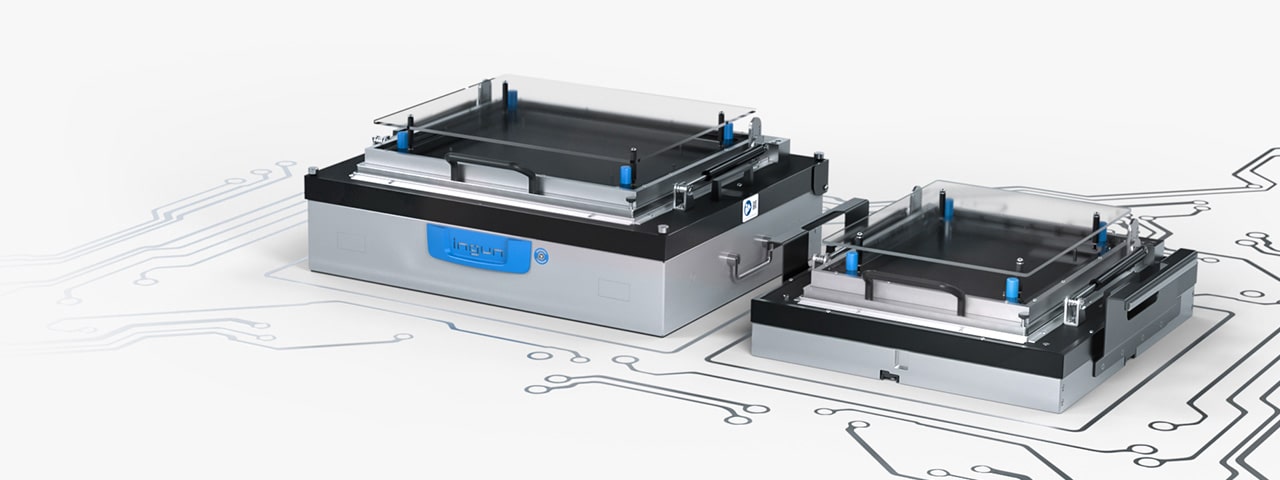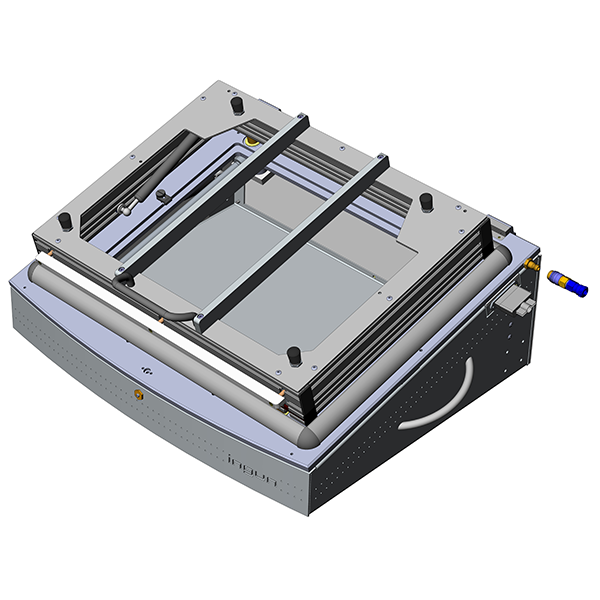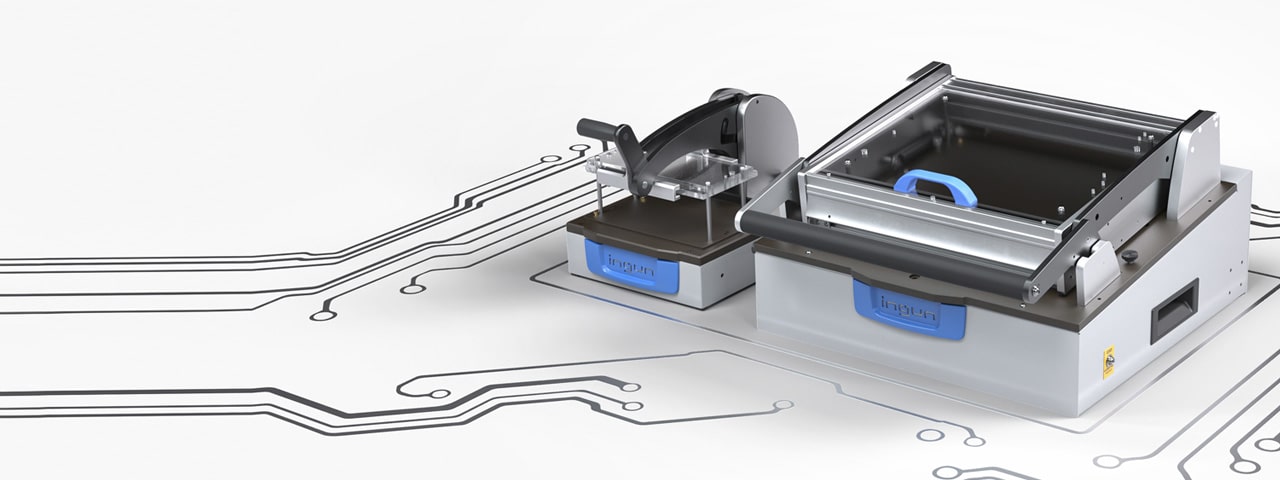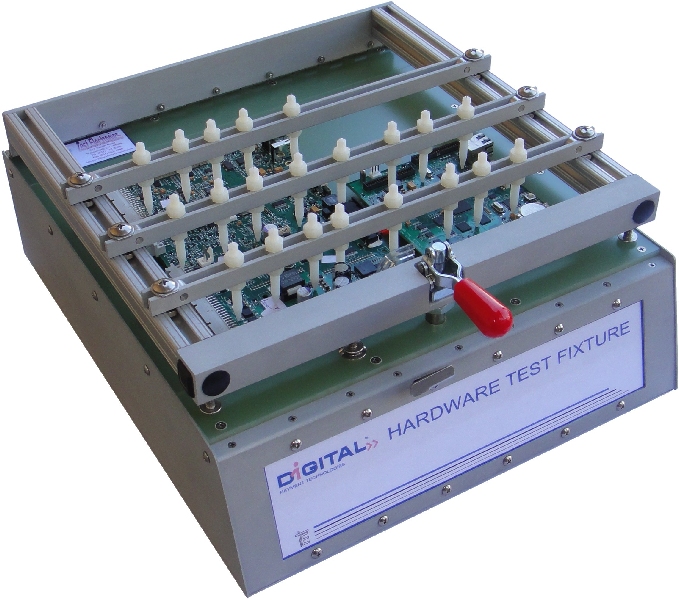In the fast-paced world of electronics manufacturing, ensuring the quality and functionality of printed circuit boards (PCBs) is crucial. One of the most effective ways to achieve this is through In-Circuit Testing (ICT), a process that relies heavily on specialized tools known as ICT test fixtures. If you're searching for detailed insights into vacuum ICT fixtures, pneumatic ICT fixtures, manual ICT fixtures, bed of nails fixture types, and ICT fixture applications, you're in the right place. This blog will explore the different types of ICT test fixtures, how they work, and their specific uses in PCB testing, helping you choose the right solution for your production needs.
At ALLPCB, we understand the importance of precision and efficiency in PCB manufacturing and testing. That’s why we’ve created this comprehensive guide to help engineers, manufacturers, and procurement specialists navigate the world of ICT test fixtures. Let’s dive into the details of these essential tools and uncover their unique benefits and applications.
What Are ICT Test Fixtures and Why Are They Important?
ICT test fixtures are specialized devices used during In-Circuit Testing to hold and connect a PCB to a testing system. These fixtures ensure that the test equipment can access specific points on the PCB, often through a series of probes, to check for defects like open circuits, short circuits, or incorrect component values. The primary goal of ICT is to identify manufacturing defects before the PCB moves to the next stage of assembly or reaches the end user.
The importance of ICT test fixtures lies in their ability to provide reliable, repeatable, and accurate testing. Without a proper fixture, achieving consistent contact with the PCB's test points would be nearly impossible, leading to unreliable results and potential product failures. By using the right fixture, manufacturers can save time, reduce costs, and maintain high-quality standards in their production process.
Understanding the Different Types of ICT Test Fixtures
ICT test fixtures come in various types, each designed to meet specific testing needs based on production volume, PCB complexity, and budget constraints. Below, we’ll break down the most common types, including vacuum ICT fixtures, pneumatic ICT fixtures, and manual ICT fixtures, along with their unique features.
1. Vacuum ICT Fixture
A vacuum ICT fixture uses suction to hold the PCB securely in place during testing. This type of fixture is often used in high-volume production environments because it can quickly and reliably establish contact between the test probes and the PCB. The vacuum mechanism pulls the PCB down onto a bed of probes, ensuring consistent pressure across all test points.
One of the standout benefits of vacuum ICT fixtures is their ability to handle complex PCBs with numerous test points. They are especially effective for double-sided testing, where probes contact both the top and bottom of the board simultaneously. This capability can significantly reduce testing time, with some setups achieving full board testing in under 30 seconds for high-density designs.

2. Pneumatic ICT Fixture
A pneumatic ICT fixture relies on compressed air to press the PCB against the test probes. This type of fixture is known for its precision and is often used in automated or semi-automated testing setups. Pneumatic fixtures are ideal for medium to high-volume production runs where speed and repeatability are critical.
The main advantage of pneumatic ICT fixtures is their ability to apply uniform pressure, ensuring stable contact even on uneven or warped PCBs. They are also highly customizable, allowing for adjustments in pressure levels (often ranging from 2 to 6 bar) to match the specific requirements of the board being tested. This makes them a versatile choice for manufacturers dealing with a variety of PCB designs.

3. Manual ICT Fixture
For low-volume production or prototype testing, a manual ICT fixture offers a cost-effective and straightforward solution. As the name suggests, this type of fixture requires an operator to manually place the PCB into the fixture and apply pressure, often by closing a lid or turning a lever to bring the probes into contact with the board.
While manual ICT fixtures lack the speed and automation of vacuum or pneumatic options, they are highly flexible and easy to set up. They are often used in smaller workshops or during the early stages of product development when only a few boards need testing. Their simplicity also means lower upfront costs, making them accessible for startups or small-scale manufacturers.

Exploring Bed of Nails Fixture Types
Within the realm of ICT test fixtures, the bed of nails fixture types are among the most widely recognized and used. These fixtures feature a grid of spring-loaded probes (or "nails") that make contact with specific test points on the PCB. The design ensures precise alignment and reliable electrical connections during testing.
There are several variations of bed of nails fixtures, each tailored to different testing scenarios. Let’s take a closer look at the most common types:
1. Single-Sided Bed of Nails Fixture
This type of fixture is designed to test only one side of the PCB. It is commonly used for simpler boards with test points concentrated on a single surface. Single-sided fixtures are often paired with manual or low-cost setups due to their straightforward design.
2. Double-Sided Bed of Nails Fixture
For more complex PCBs with components and test points on both sides, a double-sided bed of nails fixture is essential. This fixture uses probes on both the top and bottom to access all necessary points simultaneously. It is frequently used with vacuum or pneumatic systems to ensure even contact across the board.
3. Wireless Bed of Nails Fixture
Also known as a "wireless" fixture, this type minimizes the use of wired connections between the probes and the test system. Instead, it relies on advanced contact mechanisms to transmit signals, reducing clutter and improving reliability. Wireless bed of nails fixtures are often used in high-density testing environments where traditional wiring could interfere with the setup.

Key ICT Fixture Applications in PCB Manufacturing
Understanding ICT fixture applications is just as important as knowing the types of fixtures available. These tools play a vital role in various stages of PCB production, ensuring quality and reliability. Below are some of the most common applications where ICT fixtures shine:
1. Quality Control in High-Volume Production
In high-volume manufacturing, ICT fixtures are indispensable for quickly identifying defects like soldering issues or incorrect component placements. Vacuum and pneumatic fixtures are often used in these settings due to their speed and automation capabilities. For instance, a typical high-volume setup might test over 500 boards per hour, catching faults with over 95% accuracy.
2. Prototype Testing and Validation
During the design and prototyping phase, manual ICT fixtures are frequently used to validate PCB designs before mass production. These fixtures allow engineers to test small batches of boards (often fewer than 10 at a time) and make necessary adjustments without investing in expensive automated systems.
3. Double-Sided PCB Testing
For complex boards with components on both sides, ICT fixtures with double-sided bed of nails configurations are critical. These setups ensure that all test points are accessed, providing comprehensive fault detection. This application is common in industries like telecommunications and automotive electronics, where PCB density is often high.
4. Component-Level Diagnostics
ICT fixtures are also used to perform detailed diagnostics on individual components, such as resistors, capacitors, and integrated circuits. By measuring parameters like resistance (often in the range of 1 ohm to 10 megaohms) or capacitance (from 1 pF to 100 μF), manufacturers can pinpoint defective parts before they cause broader system failures.
How to Choose the Right ICT Test Fixture for Your Needs
Selecting the appropriate ICT test fixture depends on several factors, including production volume, PCB complexity, and budget. Here are some key considerations to guide your decision:
- Production Volume: For high-volume runs, invest in vacuum or pneumatic ICT fixtures to maximize speed and efficiency. For low-volume or prototype testing, a manual fixture may suffice.
- PCB Design: Double-sided or high-density boards often require advanced fixtures with double-sided bed of nails configurations to ensure complete testing coverage.
- Budget Constraints: Manual fixtures are the most cost-effective option for small-scale operations, while automated systems offer long-term savings for larger manufacturers through reduced labor costs.
- Testing Environment: Consider whether your setup will be inline (part of an automated production line) or offline (standalone testing station), as this impacts the type of fixture you’ll need.
Benefits of Using ICT Test Fixtures in PCB Testing
Implementing ICT test fixtures in your manufacturing process offers numerous advantages that go beyond simple defect detection. Here are some of the top benefits:
- Improved Accuracy: ICT fixtures provide precise contact with test points, reducing the risk of false positives or negatives during testing. Some systems achieve accuracy rates above 98%.
- Time Efficiency: Automated fixtures like vacuum and pneumatic types drastically cut down testing times, often completing full board scans in under a minute.
- Cost Savings: By catching defects early, ICT fixtures prevent costly rework or product recalls, saving manufacturers significant expenses in the long run.
- Scalability: With options ranging from manual to fully automated systems, ICT fixtures can grow with your business, adapting to increasing production demands.
Challenges and Solutions in ICT Fixture Implementation
While ICT test fixtures are incredibly valuable, they do come with certain challenges. Understanding these issues and their solutions can help ensure a smooth testing process.
- Challenge: Fixture Wear and Tear
Spring-loaded probes in bed of nails fixtures can wear out after repeated use, leading to inconsistent contact. Regular maintenance and probe replacement (every 50,000 to 100,000 cycles) can mitigate this issue. - Challenge: Complex PCB Designs
High-density boards with fine-pitch components can be difficult to test. Using custom-designed fixtures with finer probes (down to 0.5 mm pitch) can address this problem. - Challenge: High Initial Costs
Automated fixtures can be expensive to purchase. However, the return on investment through reduced testing time and improved quality often justifies the expense for high-volume manufacturers.
Conclusion: Elevate Your PCB Testing with the Right ICT Fixture
ICT test fixtures are a cornerstone of modern PCB manufacturing, providing the precision and reliability needed to deliver high-quality electronics. Whether you’re using a vacuum ICT fixture for high-speed production, a pneumatic ICT fixture for automated testing, or a manual ICT fixture for prototypes, understanding the strengths and applications of each type is key to optimizing your process. Additionally, exploring various bed of nails fixture types and their specific ICT fixture applications ensures that you’re equipped to handle any testing challenge.
At ALLPCB, we’re committed to supporting manufacturers with the tools and knowledge needed to succeed. By choosing the right ICT test fixture for your production environment, you can enhance efficiency, reduce costs, and maintain the highest standards of quality. Explore our range of testing solutions and services to take your PCB manufacturing to the next level.
 ALLPCB
ALLPCB







